 W
WThe Alley of Angels in Donetsk, Ukraine is a memorial for children of Donbas killed during the War in Donbas. By the entrance there is an arch made of forged roses interwoven with machine gun casings, a symbol of war, and doves, a symbol of peace. Under the arch there is a granite slab with the names and ages of the killed children. The youngest ones are one year old.
 W
WThe Army Foundation College recruit abuse investigation 2014–2018 was a response to allegations from a group of 17-year-old British army recruits that 17 instructors had maltreated them during their training over nine days in June 2014. It was reported as the British army's largest ever investigation of abuse. Among the allegations were that the instructors assaulted recruits, smeared cattle dung into their mouths, and held their heads under water. The accused were initially charged with 40 counts of battery, actual bodily harm, and other offences; all denied the charges made against them.
 W
WFather Giuseppe Berton was an Italian missionary of the Catholic Church, a member of the Xaverian Missionary Fathers, who worked in Sierra Leone from 1971 until his death.
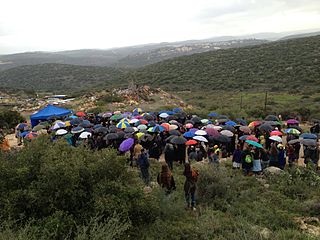 W
WThe death of Adele Biton occurred on 17 February 2015 as a consequence of a March 14, 2013 Palestinian stone-throwing attack caused the civilian vehicle in which the infant Adele was riding to crash.
 W
WThe capture and rescue of Jemima Boone and the Callaway girls is a famous incident in the colonial history of Kentucky. Three girls were captured by a Cherokee-Shawnee raiding party and later rescued by Daniel Boone and his party, celebrated for their success. The incident was portrayed in 19th-century literature and paintings: James Fenimore Cooper created a fictionalized version of the episode in his novel The Last of the Mohicans (1826). The incident was the subject of a painting entitled The Abduction of Boone's Daughter by the Indians by Charles Ferdinand Wimar.
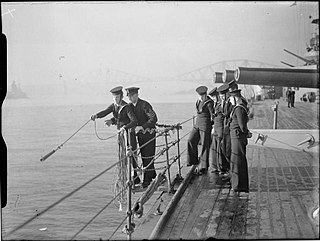 W
WA boy seaman is a boy who serves as seaman or is trained for such service.
 W
WMaria "Masha" Bruskina was a Belarusian Jewish nurse and a member of the Minsk Resistance during World War II. While volunteering as a nurse, she cared for Soviet forces, and assisted them in escaping. For this, she was executed by German forces.
 W
WChildren in the Israeli–Palestinian conflict refers to the impact of the Israeli–Palestinian conflict on minors in Israel and the Palestinian territories. Laurel Holliday, in her 1999 book Children of Israel/Palestine, writes that two "ethnically distinct peoples – both Palestinians and Israeli Jews – lay claim to the very same sand, stone, rivers, vegetation, seacoast, and mountains" and that the stories she presents show that "Israeli and Palestinian children grow up feeling that they are destined for conflict with their neighbors".
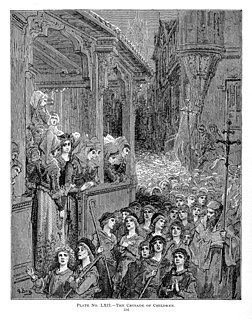 W
WThe Children's Crusade was a failed popular crusade by European Christians to establish a second Latin Kingdom of Jerusalem in the Holy Land, said to have taken place in 1212. The crusaders left areas of Northern France, led by Stephen of Cloyes, and Germany, led by Nicholas. The traditional narrative is likely conflated from some factual and mythical events which include the visions by a French boy and a German boy, an intention to peacefully convert Muslims in the Holy Land to Christianity, bands of children marching to Italy, and children being sold into slavery in Tunis.
 W
WSusanna Cole was the lone survivor of an American Indian attack in which many of her siblings were killed, as well as her famed mother Anne Hutchinson. She was taken captive following the attack and held for several years before her release.
 W
WA drummer was responsible for the army drums for use on the battlefield. Drums were part of the field music for hundreds of years, being introduced by the Ottomans to Europe. Chinese armies however had used drums even before that. With the professionalization of armies, military music was developed as well. Drums were not only used for the men to march in step, but were an important part of the battlefield communications system, with various drum rudiments used to signal different commands from officers to troops. By the second half of the 18th century, most Western armies had a standardized set of marches and signals to be played, often accompanied by fifers.
 W
WThough the United States was in combat for only a matter of months, the reorganization of society had a great effect on American life. During World War I, daily life was affected as men were drafted and sent abroad, and women had to fill their places in the factories. Youth programs grew and developed in a response to aid the government with these new programs. During and after the war, life for children in the United States was greatly affected in a variety of ways.
 W
WThe ethnic cleansing of Zamojszczyzna by Nazi Germany during World War II was carried out as part of a greater plan of forcible removal of the entire Polish populations from targeted regions of occupied Poland in preparation for the state-sponsored settlement of the ethnic German Volksdeutsche. The operation of mass expulsions from Zamojszczyzna region around the city of Zamość was carried out between November 1942 and March 1943 on direct order from Heinrich Himmler. It was preplanned by both Globocnik from Action Reinhard and Himmler, as the first stage of the eventual murderous ethnic cleansing ahead of projected Germanization of the entire General Government territory.
 W
WDuring World War II some 70,000 Finnish children were evacuated from Finland, chiefly to Sweden, but also to Norway and Denmark. Most were evacuated during the Continuation War (1941–1944) to ease the situation for their parents who set out to rebuild their homes in the re-conquered Karelia returning from the 1940 evacuation of Finnish Karelia. The first surge of evacuees arrived, however, during the Winter War when the Finns had reasons to fear a humanitarian catastrophe following the expected Soviet occupation.
 W
WBerthold Grünfeld was a Norwegian psychiatrist, sexologist, and professor of social medicine at the University of Oslo. He was also a recognized expert in forensic psychiatry, often employed by Norwegian courts to examine insanity defense pleas.
 W
WIman Darweesh Al Hams was a 13-year-old Palestinian girl killed by the Israel Defense Forces (IDF) fire on 5 October 2004, in Rafah, Gaza Strip.
 W
WLe Ly Hayslip is a Vietnamese-American writer, memoirist and humanitarian. Through her foundations, she has worked to rebuild cultural bridges between Vietnam and America following the Vietnam War.
 W
WDuring the Holocaust, children were especially vulnerable to death under the Nazi regime. According to estimations, 1.5 million children, nearly all Jewish, were murdered during the Holocaust, either directly or as a direct consequence of Nazi actions.
 W
WDuring World War II, around 200,000 ethnic Polish children as well as an unspecified number of children of other ethnicities were abducted from their homes and forcibly transported to Nazi Germany for purposes of forced labour, medical experiment, or Germanization.
 W
WKinder-KZ Litzmannstadt was a Nazi German concentration camp for Polish Christian children in occupied Łodź during World War II, established in December 1942 adjacent to the Litzmannstadt Ghetto where Polish Jews were imprisoned before the Holocaust.
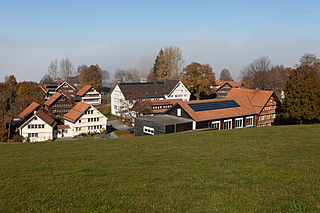 W
WKinderdorf Pestalozzi, literally Pestalozzi Children’s Village, was named after the Swiss education pioneer Johann Heinrich Pestalozzi. Established in 1945, Stiftung Kinderdorf Pestalozzi provides the Kinderdorf village for war-affected children from all over the world.
 W
WThe Kindertransport was an organised rescue effort that took place during the nine months prior to the outbreak of the Second World War. The United Kingdom took in nearly 10,000 predominantly Jewish children from Nazi Germany, Austria, Czechoslovakia and Poland, and the Free City of Danzig. The children were placed in British foster homes, hostels, schools and farms. Often they were the only members of their families who survived the Holocaust. The programme was supported, publicised and encouraged by the British government. Importantly the British government waived all those visa immigration requirements which were not within the ability of the British Jewish community to fulfil. The British government put no number limit on the programme – it was the start of the Second World War that brought it to an end, at which time about 10,000 kindertransport children had been brought to the United Kingdom.
 W
WLebensborn e.V. was an SS-initiated, state-supported, registered association in Nazi Germany with the goal of raising the birth rate of Aryan children of persons classified as 'racially pure' and 'healthy' based on Nazi racial hygiene and health ideology. Lebensborn provided welfare to its mostly unmarried mothers, encouraged anonymous births by unmarried women at their maternity homes, and mediated adoption of these children by likewise 'racially pure' and 'healthy' parents, particularly SS members and their families. The Cross of Honour of the German Mother was given to the women who bore the most Aryan children. Abortion was legalised by the Nazis for disabled and non-Germanic children, but strictly punished otherwise.
 W
WRuth Maier was an Austrian woman whose diaries describing her experiences of the Holocaust in Austria and Norway were published in 2007; reviews described her as "Norway's Anne Frank."
 W
WThe murders of Koby Mandell and Yosef Ishran occurred on 8 May 2001, when two Jewish teenagers, Yaakov "Koby" Mandell and Yosef Ishran, were killed on the outskirts of the Israeli settlement of Tekoa in the Israeli-occupied West Bank, where they lived with their families. The identity of the killers has never been determined, though Israel and a number of sources state that unidentified Palestinian terrorists were responsible.
 W
WA military brat is a child of serving or retired military personnel. Military brats are associated with a unique subculture and cultural identity. A military brat's childhood or adolescent life may be immersed in military culture to the point where the mainstream culture of their home country may seem foreign or peripheral. In many countries where there are military brat subcultures, the child's family moves great distances from one non-combat assignment to another for much of their youth. For highly mobile military brats, a mixed cultural identity often results, due to exposure to numerous national or regional cultures.
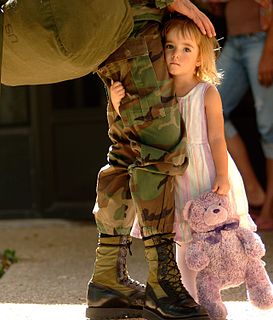 W
WIn the United States, a military brat is the child of a parent or parents serving full-time in the United States Armed Forces, whether current or former. The term military brat can also refer to the subculture and lifestyle of such families.
 W
WKhalil al-Mughrabi was a Palestinian boy aged 11 who was killed on 7 July 2001, by shots fired from an Israel Defense Forces (IDF) tank while Khalil was resting with friends after a game of soccer in Rafah. Two of his companions, aged 10 and 12, were also seriously wounded. This incident took place during the Second Intifada.
 W
WHuman rights in Myanmar under its military regime have long been regarded as among the worst in the world. International human rights organisations including Human Rights Watch, Amnesty International, and the American Association for the Advancement of Science have repeatedly documented and condemned widespread human rights violations in Myanmar. The Freedom in the World 2011 report by Freedom House notes that "The military junta has... suppressed nearly all basic rights; and committed human rights abuses with impunity." In 2011 the "country's more than 2,100 political prisoners included about 429 members of the NLD, the victors in the 1990 elections." As of July 2013, according to the Assistance Association for Political Prisoners, there were about 100 political prisoners in Burmese prisons.
 W
WFaris Odeh was a Palestinian boy shot dead by the Israel Defense Forces near the Karni crossing in the Gaza Strip while throwing stones in the second month of the Al-Aqsa Intifada.
 W
WThe deaths of Asher and Yonatan Palmer occurred on 23 September 2011, when a Palestinian stone throwing attack caused Asher, aged 24, to lose control of a vehicle he was driving near the Israeli settlement of Kiryat Arba in the West Bank, killing him and his infant son. Initially thought to be an accident, it was later deemed a terrorist attack by the Israel Police.
 W
WThe murder of Shalhevet Pass was a shooting attack carried out in Hebron, West Bank, on 26 March 2001, in which a Palestinian sniper killed 10-month-old Israeli infant Shalhevet Pass. The event shocked the Israeli public, partly because an investigation ruled that the sniper had deliberately aimed for the baby. According to Deborah Sontag of the New York Times, the murder became a "potent Israeli symbol as an innocent victim of the raging violence."
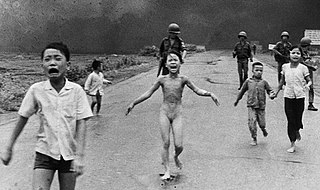 W
WPhan Thị Kim Phúc, referred to informally as the Napalm girl, is a South Vietnamese-born Canadian woman best known as the nine-year-old child depicted in the Pulitzer Prize-winning photograph taken at Trảng Bàng during the Vietnam War on June 8, 1972. The well-known photo, by AP photographer Nick Ut, shows her at nine years of age running naked on a road after being severely burned on her back by a South Vietnamese napalm attack.
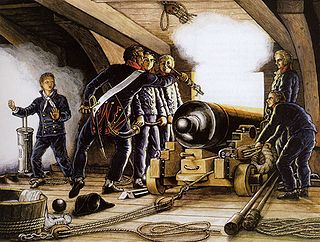 W
WA powder boy or powder monkey manned naval artillery guns as a member of a warship's crew, primarily during the Age of Sail. His chief role was to ferry gunpowder from the powder magazine in the ship's hold to the artillery pieces, either in bulk or as cartridges, to minimize the risk of fires and explosions. The function was usually fulfilled by boy seamen of 12 to 14 years of age. Powder monkeys were usually boys or young teens, selected for the job for their speed and height: they were short and could move more easily in the limited space between decks and would also be hidden behind the ship's gunwale, keeping them from being shot by enemy ships' sharpshooters. These powder monkeys held no official naval rank on the ships that they sailed on. Some women and older men also worked as powder monkeys.
 W
WOn Red Hand Day or the International Day against the Use of Child Soldiers, February 12 each year since 2002, pleas are made to political leaders and events are staged around the world to draw attention to child soldiers: children under the age of 18 who participate in military organizations of all kinds. The aim of Red Hand Day is to call for action to stop this practice, and for support for children affected by it.
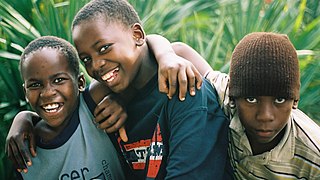 W
WNearly half of all refugees are children, and almost one in three children living outside their country of birth is a refugee. These numbers encompass children whose refugee status has been formally confirmed, as well as children in refugee-like situations.
 W
WSadako Sasaki was a Japanese girl who became a victim of the Atomic bombings of Hiroshima and Nagasaki when she was two years old. Though severely irradiated, she survived for another ten years, becoming one of the most widely known hibakusha – a Japanese term meaning "bomb-affected person". She is remembered through the story of the more than one thousand origami cranes she folded before her death.
 W
WTatyana Nikolayevna Savicheva, commonly referred to as Tanya Savicheva, was a Russian child diarist who endured the siege of Leningrad during World War II. During the siege, Savicheva recorded the successive deaths of each member of her family in her diary, with her final entry indicating her belief to be the sole living family member. Although Savicheva was rescued and transferred to a hospital, she succumbed to intestinal tuberculosis in July 1944 at age 14.
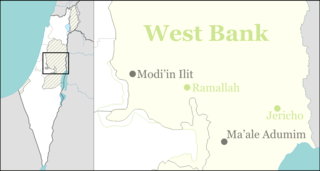 W
WThe death of Yehuda Shoham occurred as a consequence of a 5 June 2001 stoning attack attributed to Palestinians on the civilian vehicle, from the Israeli settlement of Shilo, in which the five-month-old American-Israeli Yehuda Shoham was seated. Rocks crashed through the car's windscreen and crushed the infant's skull. Shoham died of severe brain damage on 11 June 2001.
 W
WThe War Childhood Museum is a historical museum in Sarajevo, Bosnia-Herzegovina that opened in January 2017. The museum presents the experiences of children who lived through the war in Bosnia, told through objects, video testimonies, and excerpts from oral histories. The 2018 Council of Europe Museum Prize, one of the most prestigious awards in the museum industry, was awarded to the War Childhood Museum as part of the 2018 European Museum of the Year Award.
 W
WWolf children or Little Germans were German street children that existed in East Prussia at the end of World War II. Wolf children were mostly orphans left behind in the Evacuation of East Prussia and Red Army invasion in early 1945, with many living homeless in the forests of East Prussia or adopted by Lithuanian families.
 W
WThe Yeshivat Beit Yisrael massacre was a Palestinian suicide bombing which occurred in the Beit Yisrael neighborhood in downtown Jerusalem on March 2, 2002. Eleven Israeli civilians were killed in the attack, including two infants, three children and two teenagers. Over 50 people were injured in the attack, four of them critically. The bombing took place at the entrance of the Haredi yeshiva "Beit Yisrael" in central Jerusalem where people had gathered for a bar mitzvah celebration. The suicide bomber detonated the bomb full of shrapnel alongside a group of women with their baby strollers, waiting for the services in a nearby synagogue to conclude. The Palestinian militant organization al-Aqsa Martyrs' Brigades claimed responsibility for the attack.